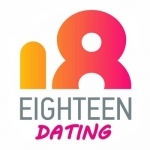
18 Dating - meet me online
Dating, Lifestyle and Social Networking
App
18 Dating is an app for grown-ups only. It's specially designed for adults who know what it means to...

Simply Piano by JoyTunes
Education and Music
App
Simply Piano is a fast and fun way to learn piano, from beginner to pro. Works with any piano or...
Ivana A. | Diary of Difference (1171 KP) rated The Little Mermaid in Books
Nov 16, 2018
I grew up with Disney movies, and my favourite one was the one with the mermaid that has long red hair, and I loved her love story, and also enjoyed watching the rest of the movie series that followed years later.
And while loving Ariel for so long, I have never actually read the original story. So a few weeks ago, I decided to cherish it properly, as a true childhood love deserves to be cherished.
And I was left with my jaw dropped and my mouth open, unable to sleep. I can’t say this book crushed my childhood love, but it definitely shook me quite hard.
If you are expecting to read about the little mermaid, and her adventures in the water, and how she would give anything to see how people live on Earth, and fall in love with a prince – you will get all that. In fact – the book description is far better compared to the movie. Incomparable, actually. The book glows with bright colourful descriptions of the world under the sea, and it is so vividly enchantingly explained.
But if you are expecting to read about the adorable love story of Ariel and the prince, and their happily ever after – that is not happening. Because things go wrong. Horribly wrong. With a crushing, terrible end, that will torture you in your dreams.
It wasn’t my intention to make this review so dark. The story is still wonderful, and full of life. However, there is no happy ending, and that, for me, was crucial to not enjoy it.
And I am not usually upset with unhappy endings. It happens so often. But this one was so brutal and cruel, that it felt so disturbing. Maybe, because it is my favorite childhood movie. Maybe, because I knew this to be a happy story. Maybe, because I didn’t expect this at all.
Hans Christian Andersen is an amazing writer. I have read many of his stories, and enjoyed them greatly. I honestly don’t know what was going on in his life when he was writing this, but wow. Just wow.
Beckie Shelton (40 KP) rated The Art of Hiding in Books
Oct 6, 2017
Until then It was a two all the way, so sorry.
I'm obviously in a minority here in regards to how The art Of Hiding was perceived by myself as I've seen many positive reviews singing its praises and this is a well-written story it just personally wasn't really my cup of tea.
So I'm going to try and pinpoint what wasn't working for me as there was never one major thing that stood out specifically and also what was actually floating my boat.
So first things first I've never read anything by Amanda Prowse before, so was going in blind here.
Well, my initial impression was that The Art Of Hiding was really well written, the words flowed easily and the writing style was one that was easy to get lost in.
But here comes my main problem, the actual story itself, I found it a bit boring and somewhat one-dimensional.
I also wondered whether the author herself has ever lived on the breadline or was this her portrayal of what she thinks it would be like to be in that scenario.
I thought to myself why wasn't Nina McCarrick with no income not down the job centre and putting in an application, dare I say it for housing benefit.
She was meant to be on her arse after all.
It also annoyed me how living on the breadline was initially portrayed all doom and gloom and shitty childhoods, I didn't find it a realistic portrayal of how the other half lives it was very stereotypical in the way it depicted the rich and the poor.
I found it so hard to connect with the characters especially Nina who I found very whiny and almost childlike in some of her reactions.
Thank god for Tiggy, she was a breath of fresh air and also very forgiving considering the way she has been treated by her sister over the past few years.
I was so glad we had tiggy to add a bit of realism to this tale, I needed her as She was the one character I actually liked completely.
So a brief description of The Art Of Hiding is Nina McCarrick has the perfect life.
Until that is her husband Finn dies in a car crash leaving Nina and their Two sons in a mountain of debt and their whole lives unravelling.
Nina moves her boys back to the streets of Southampton where she grew up and The Art Of Hiding is really the story of how Nina and her children cope and grow as individuals as their world implodes.
As I said earlier I couldn't initially connect, but then a bit before the end I felt it and this is mainly what made me bump this up a star, I had a lump in my throat as Nina and her kids visit their former home with Tiggy, it was very poignant and sentimental and after pages of just reading, I actually started to feel the words written.
Overall though this book didn't make me feel good, On finishing, I felt rather sad and deflated and I like my fiction to leave me feeling rejuvenated, an emotional wreck, happy even sad, but not deflated and down that's a no-no.
I really do think I would enjoy other works of Amanda Prowse's as I really did like the writing style It was just the Art Of Hiding just didn't quite hit the mark for me.
So, In conclusion, this is a well-written story hence the three stars, It just personally wasn't quite for me, yourself well we are all diverse in our likes and dislikes so give it a go, I would so love to hear your take on this.
I would like to thank Netgalley, the publisher and the author for providing me with an arc of The Art Of Hiding By Amanda Prowse, this is my own voluntary, honest opinion.
Arc Reviewed By Beckie Bookworm
https://www.beckiebookworm.com/
https://www.facebook.com/beckiebookworm/
https://www.goodreads.com/user/show/9460945-bex-beckie-bookworm
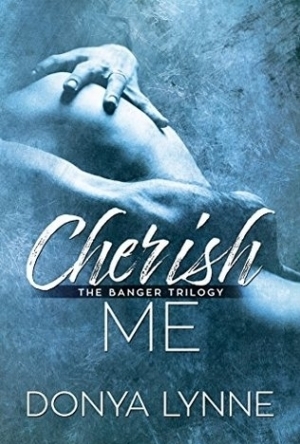
Cherish Me (Banger Triolgy #3)
Book
She wants a sexy summer fling. He wants more. And he won’t stop until he gets it. NOTE: This...
Leanne Crabtree (480 KP) rated Catch (Angler, #2) in Books
Sep 5, 2019
I read the first book, Bait, back in February 2012 and loved it. I still remember a lot of what happened and with how many books I read, that's a miracle! I think it was the whole using humans as bait to catch evil vampires that drew me in and hooked me.
This carries on from the last with just a few months passing and Connie and Rurik are in Rio. I will say that you don't necessarily need to read the first book for this to make sense but it does help to understand the connection between Rurik, Connie and Tane.
The author has this way of writing that draws you in and makes you want to get lost in the world she weaves. I will quite happily get lost in it. (Bring on book 3!)
Tane was an odd one for me, through both books, but he evolved a lot in this and we got to know him a lot more and it's obvious he isn't as bad as previously thought. Rurik is still the protective, nice, sexy vampire from the first and Connie still likes to kick arse when she can.
Though there are a few sex scenes throughout the story, there is also a good, strong plot to get lost in. I guess I should mention that it has a ménage scene in it near the end (M/M/F) that had been brewing for a long time and it was quite hot.
I cant wait to read the third book in the series to find out what's going to happen next.

Empire Four Kingdoms - MMO War
Games and Entertainment
App
Build a fortress, fight an army and conquer enemies in this epic multiplayer game! Use your strategy...
Debbiereadsbook (1444 KP) rated Ascendant (The Made Ones Sage #3) by Vicki Stiefel in Books
Jun 10, 2022
This is book 3 in The Made Ones Saga and cannot be read as a stand alone book. You NEED to read book one, Changed, and book 2, Altered, before this one. Not only will it give you Kit and Bree’s stories, it will fill in the questions to the answers that are given here!
Sybi is the third sister and her story is a little different, having been kept in stasis for some time. Kestrel knows she is his, but given his genetic make up, and what happened to him before, he is reluctant to fully bond with Sybi. But he has to, to get them out of a pickle!
Kestrel’s full story isn’t made clear for quite some time, and I wanted it sooner cos I’m greedy like that! Also, Sybi’s is quite drawn out, and I got a little frustrated at times with Mother Tree and her cryptic clues!
Kes and Sybi’s relationship kinda gets lost in the plans for the battle to bring the Alchemists down, though, and I really wanted more of them two, dealing with their feelings for the other and what it all means.
That said, I really thought this was a fitting ending and I bloody loved it! Best of the three!
I loved how all three sisters knew that they had to defy their mates, but also that said mates KNEW that they would. I loved that the entire planet comes together to stop Fukkes and thwart his plans to take over Earth.
It’s dark in places, when they discover to what extent Fukkes has been experimenting on the people of Eleutia. It’s emotional, when the three sisters are fully reunited. It’s a bit amusing: the sisters way they defy their mates made me giggle a time or two! There is some smexy times between Sybi and Kes, but it does get a bit lost.
I do feel, though, (and ya’ll know I’m ALLLLLLLLLLLLLLLL about the book feelings) that this is NOT the end. Yes, they’ve saved Eleutia from Fukkes, and the Overseers have apologised for not keeping a tighter reign on him, and the Clans have come together, and the female birth rate is already increasing, but Mother Tree is growing, and Marie grows, and what the chuffing heck does that mean! Marie was the youngest sister who died when she was ten ( I think!) on Earth so how can she be growing??? Questions, people! I’m left with unanswered questions!
So, do I gotta beg for another visit to this world and the people in it? Cos I will, you know! I’ll get down on my knees if needed (might need a lift back up though!)
5 full and shiny stars
*same worded review will appear elsewhere
Daniel Boyd (1066 KP) rated Upgrade (2018) in Movies
Oct 2, 2018 (Updated Oct 3, 2018)
Well this is it.
Upgrade is a Sci-Fi movie that doesn't follow the most unique concept in the genre, but does it in such a fresh and fun way that it works incredibly well. Upgrade also does a really good job at making you feel some genuine emotions of sadness and pity, something that I really didn't expect to get from a movie like this. When it comes to the action and violence in the movie, Upgrade embraces it's B-movie inspiration and gives us some awesome grisly practical effects along with some cool action choreography to go with it.
There are some elements to the plot that may seem bizarre to those not familiar with the more campy side of this genre and the movie does slightly feel like a video game at times. However, I don't feel that this is to the movie's detriment and instead, actually adds to the fun ride that the film is taking you on.
I also like the way the movie ended, although I saw the reveal of who the big bad was going to be coming a mile away, what happened afterward was really surprising and pretty bold and risky. I don't want to spoil anything here if I can help it, but let's just say I thought that they were going one way, which would have been a really poor, cliché ending for a movie like this and then they went in totally the opposite direction, subverting expectations and instead, choosing to end the film on a genuinely unexpected note. Whether you like the ending or not, I think that the guts it took to pull it off, deserves some praise.
Overall, Upgrade is a really fun watch. It has it's high octane action sequences as advertised in the trailer and it also has some surprisingly tender, heartfelt moments to go along with all of the stunts and gore. Definitely worth a watch if you are a sci-fi fan looking for a thrilling, bloody good time.
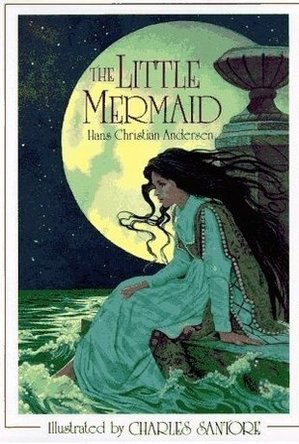



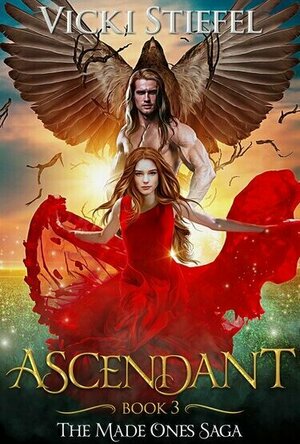
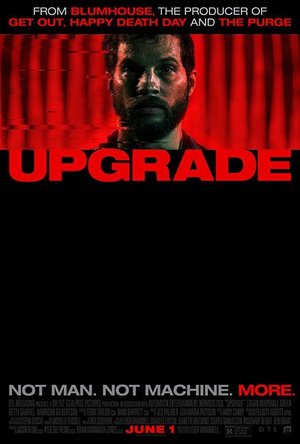
Ross (3284 KP) Nov 16, 2018 (Updated Nov 16, 2018)
Ivana A. | Diary of Difference (1171 KP) Nov 16, 2018